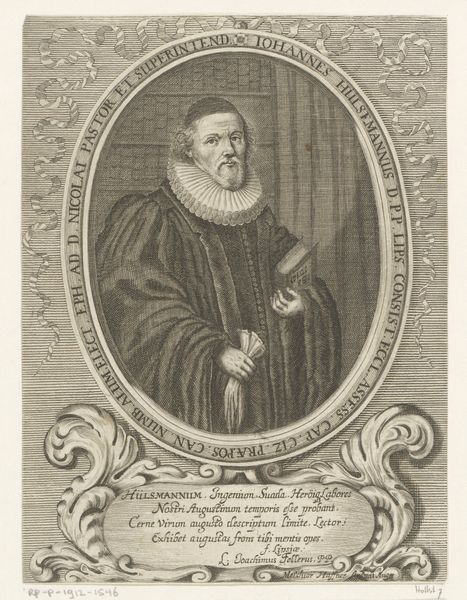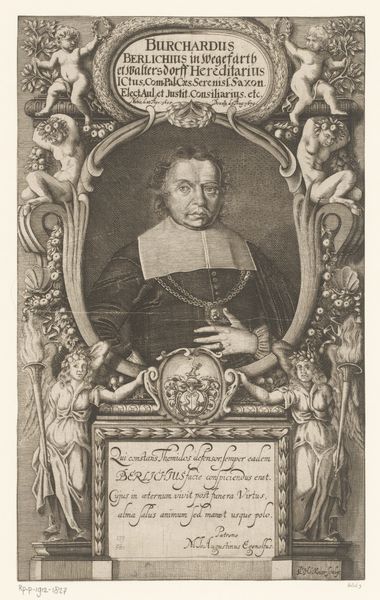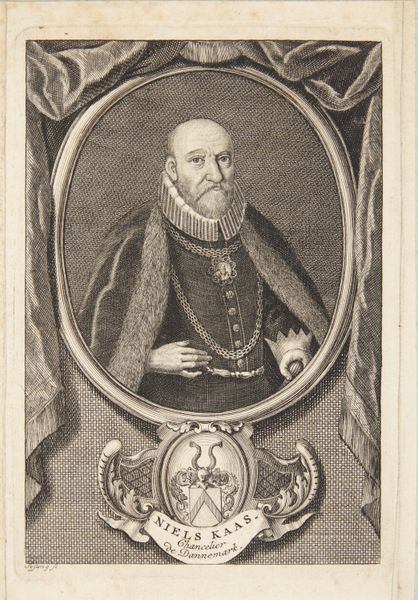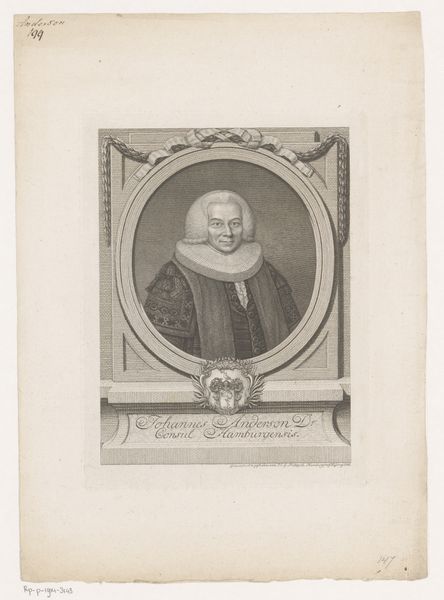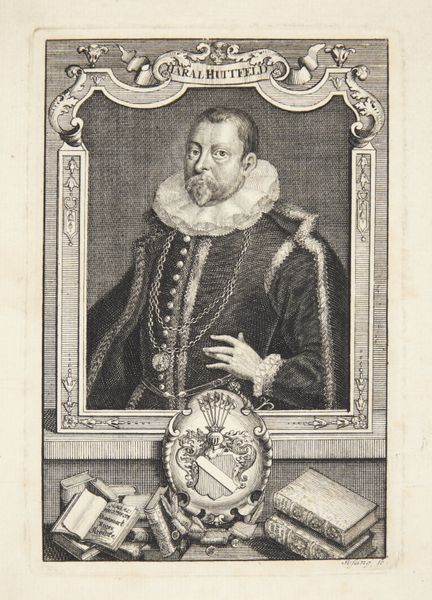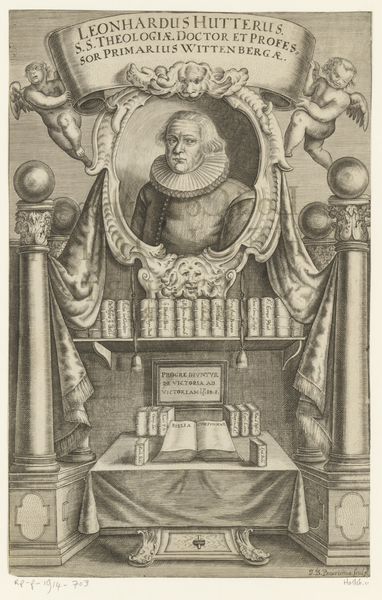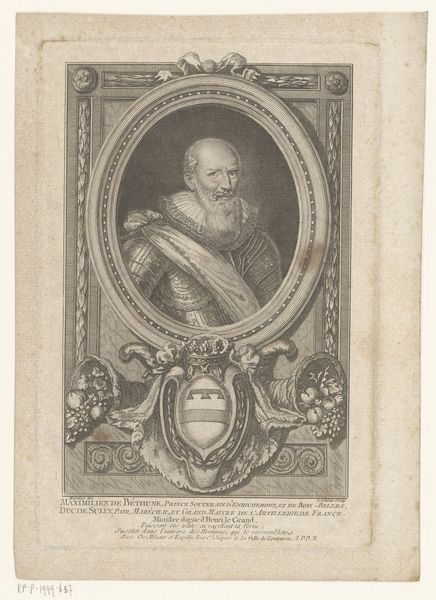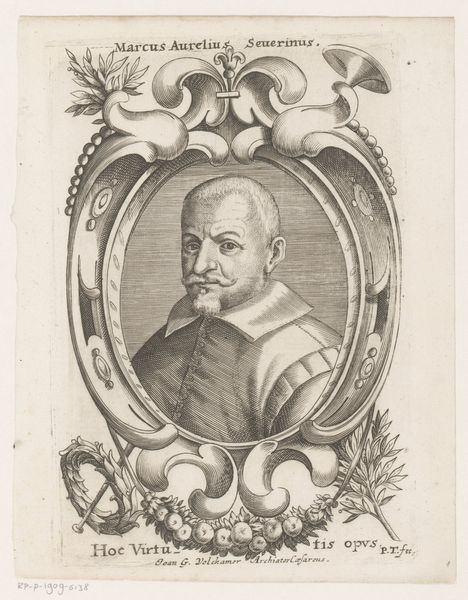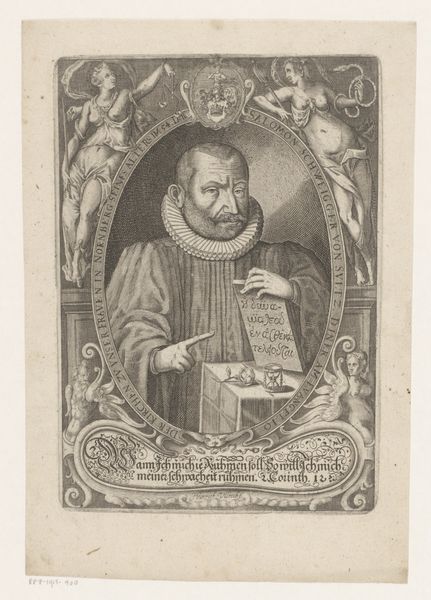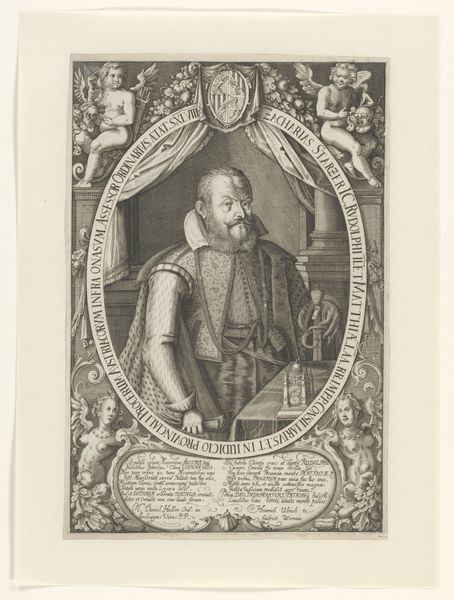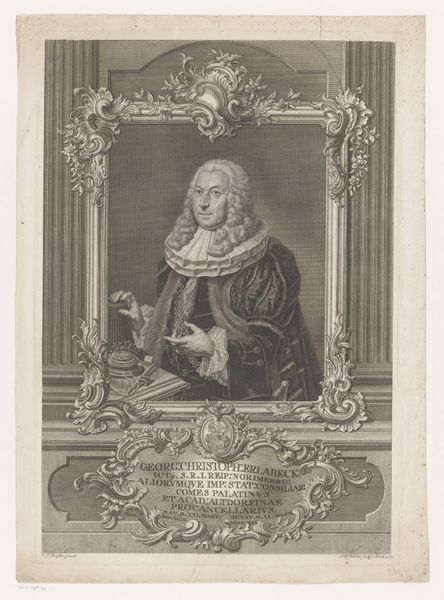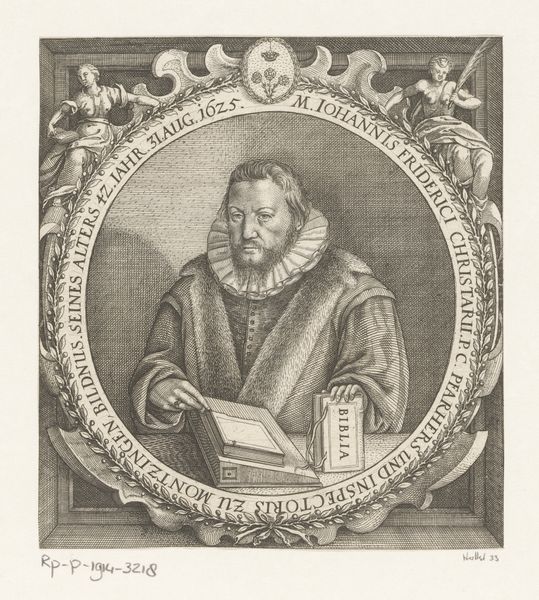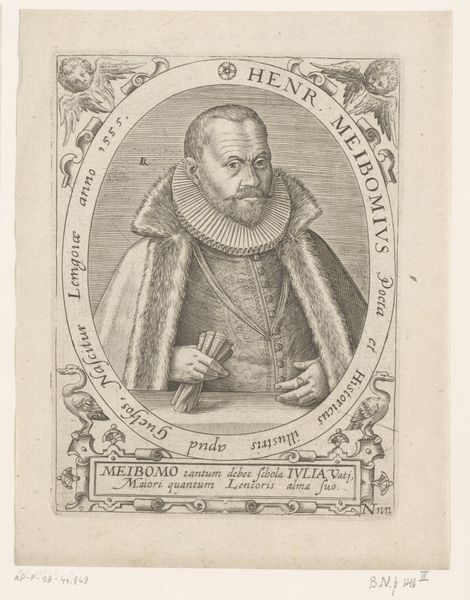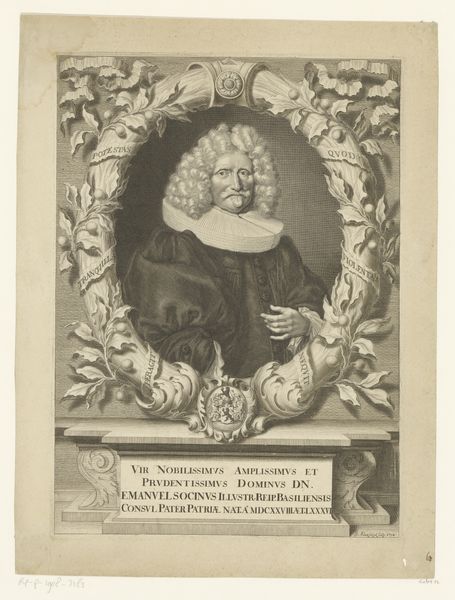
print, engraving
#
portrait
#
baroque
# print
#
old engraving style
#
pencil drawing
#
history-painting
#
engraving
Dimensions: height 314 mm, width 192 mm
Copyright: Rijks Museum: Open Domain
Curator: Here we have "Portret van Valerius Herberger," an engraving dating back to around 1700, created by Anton Wetzel. It's a baroque portrait, and looking at the textures and fine lines of the engraving... wow, that must have been painstaking work. Editor: You know, the first thing that hits me is this incredible serenity. Despite the formal ruff and the somewhat stern gaze of the subject, there's a real peacefulness radiating from this print. Almost like he’s offering sage advice through the ages. Curator: Absolutely. Considering the process of engraving, each line meticulously etched, that sense of detail lends the piece gravity. Also, the inclusion of cherubic figures and what seems like a grape vine wreath—symbols of prosperity, maybe tied to his standing or the print's commission. The consumption habits around art are just fascinating here. Editor: Good eye. And those cherubs are almost cheekily posed—look at them grappling the frame! It's playful, which does quite a lot to temper what could otherwise feel like a somber, stuffy depiction of an important clergyman. The ornate detail softens it, almost humanizes the subject despite his clerical garb. Curator: Precisely, it walks the tightrope between historical documentation and Baroque flamboyance. Wetzel, the engraver, likely saw his labor as preserving Herberger's legacy, which speaks to ideas around labor, reputation, and status that the engraving helped cement. It's about making that reputation both accessible and immutable through reproducible image-making. Editor: Exactly! Now I can’t shake this image of him standing proud to give a long speech at church for hours on end to his town. I have given my fair share, you see... I feel it connects us to history so smoothly and with so little barrier. We can feel like we are nearly in that church ourselves! Curator: Yes, this work, as an object of production and historical record, illuminates how reputation was materially constructed and disseminated, impacting communities for generations. Editor: True—we see the man, yes, but so much more in this elaborate portrait. A life and a perspective somehow gently nudged back into our reality, however fleetingly.
Comments
No comments
Be the first to comment and join the conversation on the ultimate creative platform.
